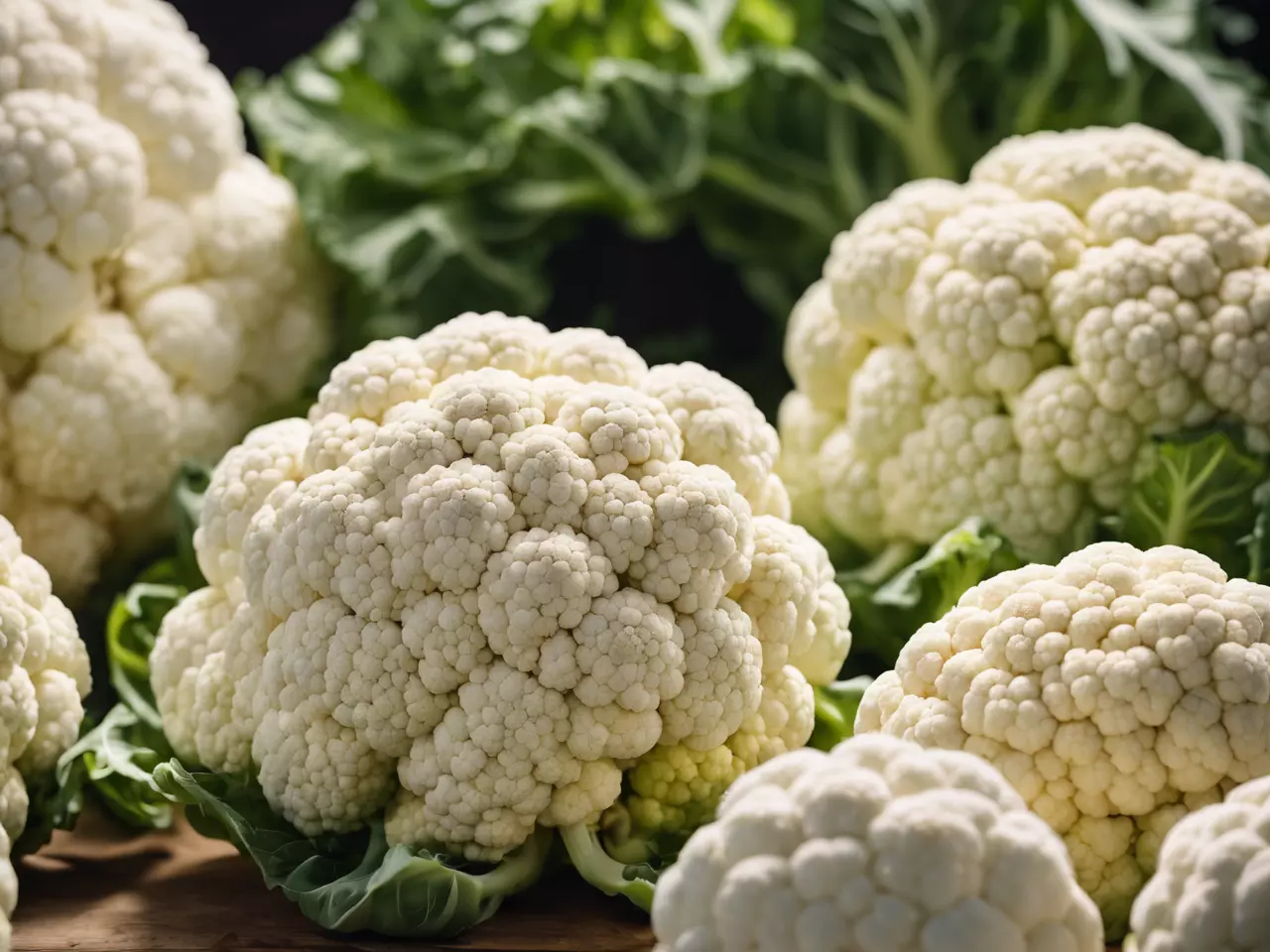Cauliflower is a widely cherished vegetable known for its versatility in the kitchen and numerous health benefits. Originating from the Mediterranean region, this cruciferous vegetable has a long history, with its popularity spreading globally over the centuries. In this guide, we delve into the seasonality of cauliflower, which is key to understanding when to plant, harvest, and enjoy this nutritious vegetable at its best.
Cauliflower is part of the Brassica family, related to broccoli, kale, and cabbage. It is appreciated not only for its flavor but also for its nutritional profile, being rich in vitamins, minerals, and antioxidants. Knowing the right time for cauliflower harvest ensures the best taste and nutrient content, making the understanding of its seasonality crucial for gardeners and cooks alike.
The Cauliflower Plant
The cauliflower plant is distinctive with its large, white, edible head, known as the curd, surrounded by green leaves. The growth cycle of cauliflower is a fascinating journey, starting from a seed and eventually developing into the familiar head we consume.
The key stages of cauliflower growth include germination, leaf development, curd formation, and maturation. The plant initially focuses on developing a strong leafy structure, which later supports the formation of the curd. The timing of these stages can vary based on the specific variety and growing conditions, influencing when the cauliflower will be ready for harvest.
Optimal Growing Conditions for Cauliflower
Cauliflower thrives in cool climates and requires specific conditions to produce its best yield. The ideal temperature for growing cauliflower is between 15 to 20 degrees Celsius (59 to 68 degrees Fahrenheit). This cool weather helps in the development of compact and firm curds.
Soil condition is also critical for cauliflower growth. The plant prefers rich, well-draining soil with a pH between 6.0 and 7.0. Adequate sunlight is necessary, but cauliflower can tolerate partial shade. Ensuring these optimal growing conditions is essential for successful cauliflower cultivation.
Cauliflower Harvesting Seasons Worldwide
The cauliflower harvesting season varies across different regions, primarily due to climate variations. In general, cauliflower is harvested in the cooler months of the year. In temperate climates, this typically means a fall harvest for spring-planted crops and a late spring or early summer harvest for fall-planted crops.
In regions with mild winters, such as the Mediterranean and parts of California, cauliflower can be grown and harvested almost year-round. However, in areas with harsh winters or extremely hot summers, the growing season is more limited. Understanding these regional differences is important for planning the planting and harvesting of cauliflower to align with its natural growing season.
Identifying When Cauliflower is Ready to Harvest
Knowing when to harvest cauliflower is crucial for enjoying its optimal flavor and texture. A mature cauliflower head is typically compact, firm, and white or cream in color, depending on the variety. The size of the head can vary, but it generally reaches about 6 to 12 inches in diameter when it’s ready for harvest.
The readiness of cauliflower for harvest can also be judged by the tightness of the curd. The florets should be closely packed; if they begin to separate and the curd becomes grainy or ricey, it may be over-mature. Additionally, the surrounding leaves should still be vibrant and green. If the leaves start yellowing, it’s a sign that harvest time is imminent.
Factors Influencing Cauliflower Seasonality
Several factors can influence the seasonality and growth of cauliflower. Temperature fluctuations are a major factor; extreme heat or cold can impede growth or lead to poor-quality curds. Consistent, cool temperatures are ideal for cauliflower development.
The variety of cauliflower also plays a significant role in its growing season. Some varieties are more heat-tolerant and can be grown in warmer months, while others are frost-tolerant and better suited for colder seasons. Selecting the right variety for your local climate and desired harvest time is key.
Growing and Caring for Cauliflower
Successful cauliflower growth requires attention to several key gardening practices. Planting should be timed based on the desired harvest season and local climate conditions. Cauliflower seeds can be started indoors and transplanted outside when the seedlings are strong enough and the outdoor temperature is suitable.
Regular watering is essential to keep the soil consistently moist but not waterlogged. Cauliflower plants are heavy feeders, so applying a balanced fertilizer throughout the growing season is important for healthy growth and curd development. Additionally, mulching can help retain soil moisture and regulate temperature.
Proper spacing is also crucial for cauliflower plants. They need enough room to grow and develop large heads, so they should be spaced about 18 to 24 inches apart. This spacing allows adequate air circulation, which is vital for preventing fungal diseases.
Challenges in Cauliflower Cultivation
Growing cauliflower can present several challenges, primarily related to pests and diseases. Common pests include cabbage loopers, aphids, and flea beetles, which can damage the leaves and affect the overall health of the plant. Diseases such as black rot, clubroot, and downy mildew can also impact cauliflower growth, often leading to poor curd development.
To manage these challenges, it’s important to implement integrated pest management strategies. Regularly inspecting plants and employing natural predators or organic pesticides can help control pest populations. For diseases, practicing crop rotation and maintaining good soil health can be effective preventive measures. Additionally, selecting disease-resistant cauliflower varieties can significantly reduce the risk of these problems.
Harvesting and Storing Cauliflower
Once cauliflower heads reach their peak maturity, they should be harvested promptly to preserve their quality. Cut the head off the plant with a sharp knife, leaving some leaves attached to protect the curd. Harvesting in the morning can ensure the best flavor and crispness.
After harvesting, cauliflower can be stored in the refrigerator for up to a week. For longer preservation, blanching and freezing cauliflower is an effective method. Cauliflower can also be pickled or dried for extended storage and different culinary uses.
Enjoying Cauliflower in Different Seasons
While fresh cauliflower is typically available in cooler months, preserved cauliflower can be enjoyed year-round. This versatility allows for a variety of culinary applications, from raw florets in salads to roasted or steamed cauliflower as a side dish. Cauliflower’s adaptability in recipes makes it a valuable vegetable in any kitchen.
Conclusion
Cauliflower is a rewarding crop for gardeners, offering both nutritional benefits and culinary versatility. Understanding the seasonality of cauliflower, along with the factors that influence its growth, can lead to successful cultivation and a bountiful harvest. By overcoming the challenges of pests and diseases and employing proper care techniques, gardeners can enjoy the fruits of their labor in the form of delicious, healthy cauliflower.
The journey of growing cauliflower, from planting to harvest, is a testament to the rewards of gardening. With each season, gardeners gain new insights and experiences, contributing to their overall gardening expertise. Whether you’re a seasoned gardener or a beginner, growing cauliflower can be a fulfilling and enriching endeavor.


